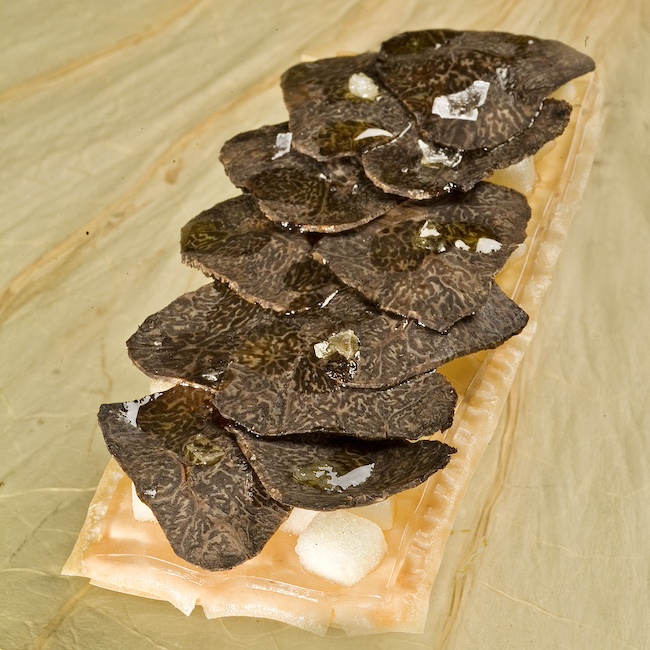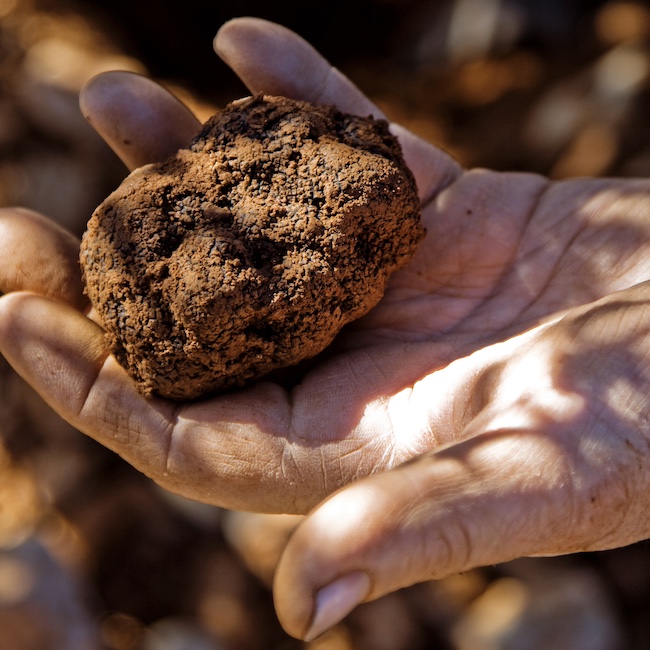.png.transform/rendition-xs/image_image%20(1).png)
The Truffle: The Black Treasure of Spanish Gastronomy
Winter marks the peak season for one of the most prized ingredients in international gastronomy, of which Spain is the world’s largest producer
Every winter—from December to March—dogs take center stage in a remarkable spectacle across Spain’s truffle-producing provinces. They sniff through the fields in search of something invisible to the human eye but unmistakable to their noses. Once found, they signal their discovery so that someone can unearth it: the precious black truffle, a delicacy ranked alongside caviar in the culinary world.
Spain is the world's leading producer of truffles, a culinary gem often imagined to grow wild. However, cultivated truffles far outnumber those naturally occurring without human intervention. Truffles are the fruiting bodies of mycorrhizal fungi that grow underground, forming symbiotic relationships with the roots of certain trees. To cultivate them, truffle farmers must reforest their land with trees inoculated with truffle fungi.
Black truffles thrive in cold, dry, and windy areas with a Mediterranean climate. They require annual rainfall between 500 and 800 mm, sufficient spring moisture to support fungal development, and summer storms to help the truffles mature.
The ideal climate for truffle cultivation has an average annual temperature between 12 and 15°C. In the coldest month, temperatures should range from 2° to 5°C, while the warmest month should see temperatures between 20° and 25°C. When these conditions are met, truffle farming becomes viable.

Truffle under PGI
While several Spanish provinces are known for truffle cultivation, Teruel in Aragón leads in production. Since late 2024, the black truffle of Teruel (Tuber melanosporum) has been protected by the Protected Geographical Indication (PGI) seal. The cultivation, harvesting, preservation, grading, and packaging of Teruel's black truffle are restricted to this province. The region’s climate imparts the truffles with a unique flavor and an intense, distinctive aroma—qualities that make them highly sought after in gastronomy.
Beyond Teruel, Soria in Castile - León is another important truffle-growing region. The black truffle found there is also Tuber melanosporum, thriving in the province’s similarly dry and cold climate, which enhances its quality.
With such a premium ingredient, the culinary possibilities are endless. Every February, "Cooking with Truffle" is held in Soria, a prestigious gastronomy competition that brings together chefs from around the world to showcase their mastery of this prized fungus. In the latest edition, Portuguese chef Diego Duarte from The Yeatman Hotel in Porto claimed victory with a dish featuring truffle, pear, pear compote, thyme oil, truffle oil, and cheese, accompanied by a foie gras and pear "false truffle.”

Diego Duarte’s victory is a clear demonstration of the international reach of Spanish truffles. Spain is the world’s leading exporter of this prized fungus. In 2022, truffle cultivation in Spain generated over €25 million in exports, with France and Italy as the main markets, followed by the United States and China. More than 80% of Spain’s truffle production is exported, delighting gourmet enthusiasts around the world.
The flavor of Spanish black truffle can be enjoyed in restaurants certified with the Restaurantes from Spain seal. This happens in La Loca Maria (Mumbai) where trufa negra sourced from Spain is served in an exquisite and festive menu. Black truffle can be found also in the luxurious bikini (ham and cheese sandwich) chef Carles Abellán serves at Tapas 24 in Singapur.
